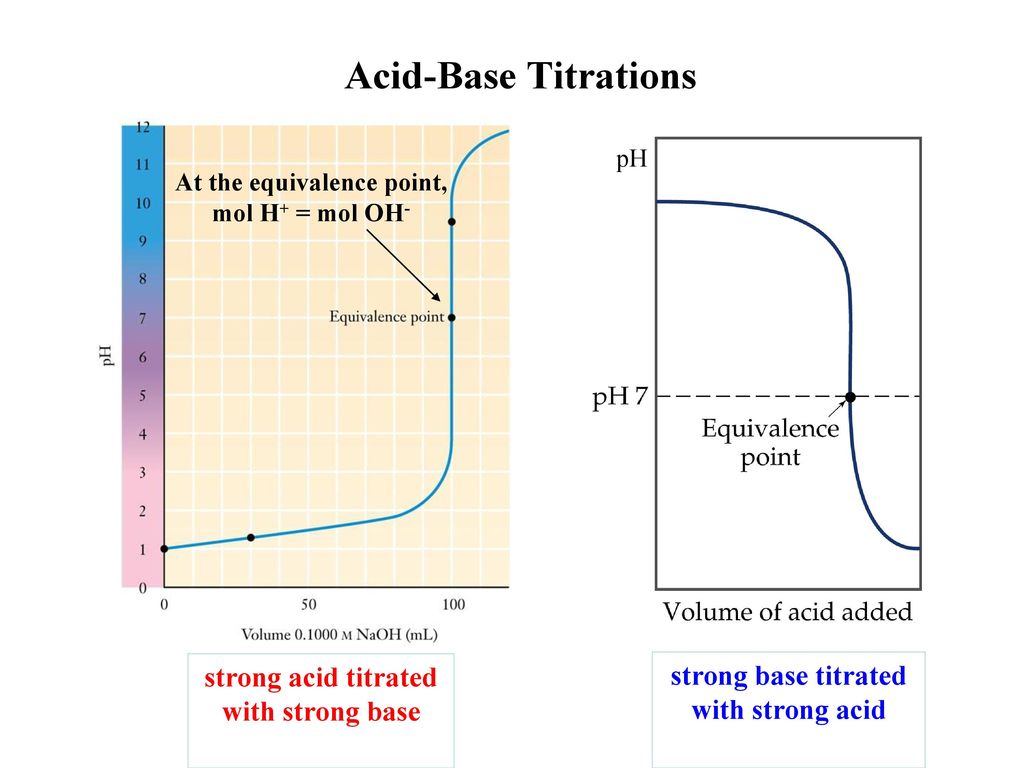Explain the Difference Between End Point and Equivalence Point
The equivalence point of a chemical reaction is the point at which equal quantities of reactants are mixed chemically. Endpoint is point in which indicator change the color and equivalence point is point in which there is equal amount of two chemicals.
Endpoint Vs Equivalence Point What S The Main Difference Psiberg
Dont forget to mark me as brainlist.
. Chemistry questions and answers. If you are titrating an acid against a base the half equivalence point will be the point at which half the acid has been neutralised by the base. So end point is the point shown by an indicator.
Here we have a 1 to 1 reaction between the ammonia and HCL and so the number of moles of HCL in the uh in the Thai Trey shin flask will be equal to the number of moles of ammonia at the equivalents point. On one of your titration curves mark the buffer region the equivalent point and the region after the equivalence point. Endpoint and equivalence can occur at the same time if the pH of the titrant corresponds to the pH at equivalence point.
The main difference between equivalence point and endpoint is that equivalence point is the precise finishing point where the chemical reaction usually comes to end whereas endpoint is the limit where the alteration in color happens in the arrangement. In other words while titrating it is a point where the amount of added titrant is enough to neutralize the analyte solution completely. The NaOH solution used during the titration will be standardized by the lab prep staff before it is used in the experiment.
Titration is a technique we use widely in analytical chemistry to determine. Remember that acid strength depends upon Ka not upon analytical concentration. What is the observed difference in these two quantities in your titration.
The main difference between equivalence and endpoint is that the equivalence point is a point where the chemical reaction comes to an end while the endpoint is the point where the colour change occurs in a system. The key difference between endpoint and stoichiometric point is that endpoint comes just after the stoichiometric point whereas stoichiometric point is the most accurate point at which the neutralization completes. The equivalence point is where the amount of moles of acid and base are equal resulting a solution of only salt and water.
Which graphical method of determining the endpoint do you prefer. Explain the difference between an endpoint and an equivalence point in a titration. Endpoints can be reached with or after the point of equivalence.
Explain the difference between the end point and the equivalence point in a titration. Equivalence point is the actual point where the reaction has just been completed and refers to the stoichiometric quantities of reactants eg when 1 mole HCl is added to 1 mole of NaOH. Equivalence point can be multiple in number during titration but the endpoint is the one point and does not occur frequently.
Main Differences Between Endpoint and Equivalence Point. Standard solution is equal to the moles of a solution. The number of moles of titrant ie.
Equivalence point means that the titrant has reacted fully with the analyte whereas the endpoint signals the completion of titration. There will be more than one equivalence point for polyprotic acids and bases with more than 1 x OH- ions. The key difference between equivalence point and endpoint is that the equivalence point in a titration is the point at which the added titrant is chemically equivalent completely to the analyte in the sample whereas the endpoint is the point where the indicator changes its colour.
Endpoint and equivalence points are basically two different stages in the titration process. Explain the difference between the end point and the equivalence point in a titration. Your answer should be based upon the proton transfer reaction that is important at the equivalence point.
The end point is when you see the change in the indicator the changing color of the indicator and of course you want that to be Ah what youre really trying to see with that. Equivalence point is the point where equal number of moles of acid and the number of moles of base that have been mixed together are equal. 4 rows A point of equivalence in a titration refers to a point at which the added titrant is.
Why is it important to calibrate the pH meter. Endpoint and stoichiometric point in common equivalence point are always different from each other. End point is the point at which the indicator being used in such a reaction changes colour.
Endpoint is the point in the titration where the indicator changes its color. 1 Explain the difference between equivalence point and end point. Explain the difference between endpoint and equivalence point.
Explain how the pH at the equivalence point varies as the strength of the acid increases.

Titration Curves Equivalence Point Article Khan Academy
Difference Between Equivalence Point And Endpoint Definition Properties Examples
Endpoint Vs Equivalence Point What S The Main Difference Psiberg
Difference Between Equivalence Point And Endpoint Definition Properties Examples
Difference Between Endpoint And Equivalence Point Difference Between

Difference Between Half Equivalence Point And Equivalence Point Compare The Difference Between Similar Terms
Difference Between Endpoint And Equivalence Point Difference Between
Endpoint Vs Equivalence Point What S The Main Difference Psiberg

Difference Between Endpoint And Stoichiometric Point Compare The Difference Between Similar Terms
Difference Between Endpoint And Equivalence Point Difference Between
Endpoint Vs Equivalence Point What S The Main Difference Psiberg

Acid Base Titrations End Point And Equivalence Point Ppt Download
Difference Between Equivalence Point And Endpoint Definition Properties Examples
Endpoint Vs Equivalence Point What S The Main Difference Psiberg
Difference Between Endpoint And Equivalence Point Difference Between
Difference Between Endpoint And Equivalence Point Difference Between

Lecture 2 2 Titrimetry Volumetry Acid Base Equilibria Ppt Download


Comments
Post a Comment